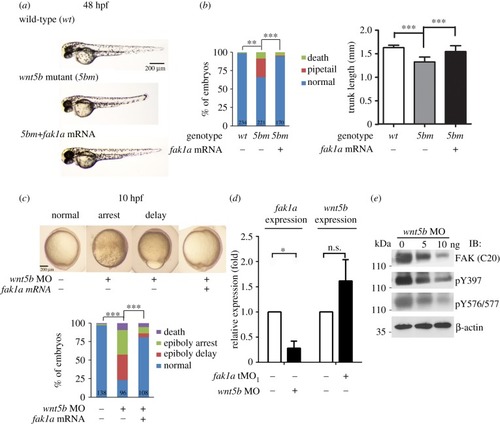
Overexpression of fak1a rescues gastrulation defects in wnt5b-deficient embryos. (a) Wild-type or wnt5b/ppt mutant embryos were untreated or injected with fak1a mRNA, cultured until 48 h post-fertilization (hpf), and photographed. The percentages of embryos with dead, pipetail or normal phenotypes were calculated and shown (right). The total number of embryos used for each treatment is shown at the bottom of each bar. (b) The average trunk lengths among the three groups were compared (n = 3, **p < 0.01, ***p < 0.001). (c) Embryos were injected with 3.75 ng wnt5b morpholino (MO) without (control) or with 200 pg fak1a mRNA and photographed at 10 hpf. wnt5b MO-injected embryos showed different degrees of epiboly defects, which was rescued by a fak1a mRNA co-injection. Representative photographs are shown at the top and quantitative analysis shown at the bottom. (d) Embryos were injected with designated MOs, cultured to the bud stage, lysed and subjected to a qPCR to determine fak1a or wnt5b expression. (e) Embryos were injected with a designated amount of the wnt5b MO, collected at the bud stage and subjected to immunoblotting against indicated antibodies specific to focal adhesion kinase (FA) (C-20) and different FAK phosphorylation sites. β-actin served as an internal control.
|

